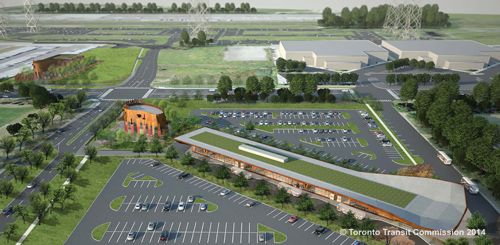STEPHEN WICKENS
Most who care seriously about Toronto affairs will already have read Marcus Gee’s Globe and Mail column about how the DRL has become the unicorn of transit projects. Well, funny how things come full circle to bite us in the ass … and being bitten on ass by a unicorn may be doubly painful.
Below is a map of the east portion of the TTC’s planned June 1968 DRL alignment (even if we called it the Queen subway then). The Bloor-Danforth extensions to Warden and Islington had been completed the previous month and work to extend the Yonge subway from Eglinton to Finch was under way.
The DRL, meanwhile, was going head-to-head with Spadina for next spot on the priority list. Key to the discussion (but largely overlooked in the current consultations) are the yard functions essential to any rail project.
The pink area below is Greenwood yard, and it was decided in 1968 that the Queen line’s only real yard option would be to take over Greenwood from the Bloor-Danforth line, which would then get a new yard in the west end. That’s why Metropolitan Toronto bought the Westwood Theatre lands, which, after languishing for decades, are suddenly not available as Build Toronto finally redevelops them as part of the Six Points project.
So the fact that the Bloor-Danforth is now largely locked into the Greenwood arrangement (unless something related to the Scarborough extension can be worked out) makes it even tougher to do Phase I of the DRL … unless it includes Phase II up to Eglinton (allowing for a possible yard near Bermondsey). That wouldn’t be so bad because key to making the DRL really pay off is to get it to Thorncliffe and Flemingdon, two of the densest and most transit-dependent neighbourhoods in the country. But making the initial phase longer further reduces the likelihood shovels will ever break ground.
Alas, the chain reactions and the lack of institutional memory now make the DRL less likely than ever, even as the enduring desire for this line is further indication that it really should have been a priority city-building project all along. And it’s sort of ironic that the Westwood lands were taken out of play right at the moment when the long-forgotten reason for their purchase becomes apparent again.
Those who ignore history and all that.

